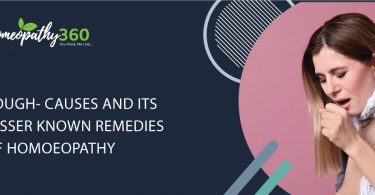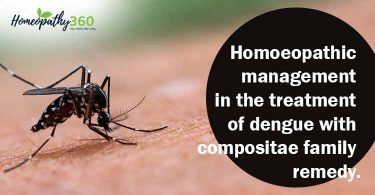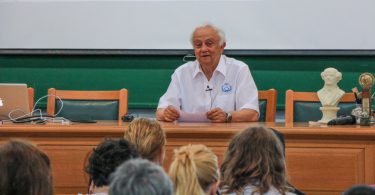
Abstract – Heat illnesses are increasingly prevalent during the summer months, with rising global temperatures. The spectrum of heat-related disorders ranges from heat cramps and heat edema to life-threatening conditions like heat stroke. These illnesses occur when the body is exposed to high temperatures for extended periods, leading to dysregulation of the body’s thermoregulatory mechanism. Vulnerable populations, including individuals over 65 years, those with chronic diseases, and certain occupational groups like agricultural and military personnel, are disproportionately affected. The body’s inability to balance heat production and heat loss results in elevated core temperature, dehydration, electrolyte imbalance, and ultimately leading to severe and potentially fatal outcomes. Homeopathy is a great therapeutic approach in preventing sunstrokes and managing heat-related illnesses.
Keywords – Heat related illness, Heat stroke, Heat exhaustion, Sun exposure, Temperature, Homoeopathy.
Introduction– Humans are homeothermic creatures. Human body attempts to maintain a core body temperature roughly of 37 0Celsius (36-380C). This is maintained by balancing body heat production with heat loss through various physiological mechanisms. If this thermoregulation fails heat related illnesses occur.
Heat Related Illnesses include various disorders ranging from milder forms like heat cramps, heat edema to heat stroke which is a medical emergency. (1)
Exertional heat illness develops when heat production exceeds the body’s ability to lose it.
High Risk Patients-
- Extremes of age (<5 yrs or >65 yrs)
- Pregnancy
- Occupation- workers in military, agricultural, construction and industrial settings, laborers, sports person.
- Lack of acclimatization to environmental heat.
- High ambient temperature, high atmospheric humidity.
- Use of certain medications- phenothiazines, anticholinergics, ACE inhibitors, etc.
- Dehydration
Figure 1 Response to extremes of temperature (2)
Epidemiology – Heat stress is a leading cause of weather-related fatalities, which can also exacerbate underlying illnesses. The climate change is causing an increase in number of people exposed to extreme heat all over world.
According to WHO reports, heat related mortality over 65 yrs has increased to 85% between 2000-2004 and 2017- 2021. Some studies from 2000-2019 showed 489000 deaths annually with approx. 45% occurring in Asia and 36% in Europe. (3)
Thermoregulation-
Human body is capable of heat generation through metabolic processes. This along with environmental heat absorption is balanced by heat dissipation mechanisms. The thermoregulation takes place via anterior hypothalamus which sends signals through efferent nerve causing cutaneous vasodilation and diaphoresis to facilitate heat loss(1,4)
4 mechanisms involved-
- Evaporation
- Radiation
- Conduction
- Convection
Factors interfering with these mechanisms-
- Occlusive clothes
- Excess humidity
- Dehydration
- Dripping of sweat off the skin
Minor Heat Emergency Syndromes–
- HEAT EDEMA- mild swelling of hands, feet and ankles during initial exposure to significant high temperatures.
- PRICKLY HEAT (miliaria rubra)- maculopapular erythematous rashes occurring in clothed areas due to blockage of sweat pores. Manifest with severe itching.
- HEAT SYNCOPE- usually seen following strenuous exercise in heat resulting in postural hypotension.
Major Heat Illnesses –
- HEAT CRAMPS-
These are intermittent, painful contractions of skeletal muscles usually occurring after vigorous exercise in hot environment. The condition is usually exaggerated by dehydration, electrolyte depletion, sodium losses from sweating and triggered by ingestion of hypotonic fluids resulting in hyponatremia, hypochloremia causing muscle cramps. Core body temperature is not elevated.
- HEAT EXHAUSTION-
Heat exhaustion is the most encountered heat stress condition which occurs with prolong exertion in hot environment, profuse sweating and inadequate salt and water replacement.
The thermoregulatory control is maintained, and no CNS dysfunction is seen. Presentation includes increased core body temperature which is usually less than 400C, headache, vertigo, impaired judgment, malaise, dizziness, nausea, muscle cramp along with orthostatic hypotension and sinus tachycardia.
- HEAT STROKE-
Heat stroke occurs when the core body temperature rises above 400C with a total loss of thermoregulatory function. Usually, diagnosis is based on exclusion of other probable etiologies.
Initial diagnosis is based on physical features of core temperature >400C, CNS dysfunction and exposure history to heat stress. Prodromal symptoms often resemble heat exhaustion including weakness, dizziness, disorientation.
Types of Heat Stroke-
- CLASSIC HEATSTROKE (CHS)- often seen in elderly patients or with some chronic disease. Usually occur in an epidemic form during heat waves in summer. Most patients present with elevated temp >400C, absence of sweating with hot, dry skin.
- EXERTIONAL HEATSTROKE (EHS)- often seen in young otherwise healthy individuals during extreme heat stress. It is seen in sporadic forms. Laborers, athletes, military personnels are more often seen to suffer with EHS. Patients present with elevated body temperature with profuse sweating unlike CHS.
Other features seen in heat stroke include tachypnoea, tachycardia, hypotension, and widened pulse pressure, delirium, convulsions, partial or complete loss of consciousness.(5)
Diagnosis –
Diagnosis is usually based on exclusion of other possible etiologies due to many nonspecific features.
History plays an important role in early diagnosis of the condition. Heat exhaustion presents hyponatremia and hypochloremia. Hemoconcentration does not always develop. Hepatic aminotransferases are mildly elevated.
Heat stroke present with increased serum level of aspartate aminotransferase (AST) and alanine aminotransferase (ALT) upto 100 times, decreased platelets, fibrinogens, hyponatraemia, hypochloremia.
The findings in heat related illnesses are not specific and are seen in others as well therefore always need exclusion of other conditions.
Differential Diagnosis
- Sepsis
- Malaria
- Drug overuse
- Serotonin syndrome
- Malignant hyperpyrexia
- Thyroid storm
- Other infectious illnesses
- Myopathies
Complications –
- Hepatic injury
- Rhabdomyolysis
- Acute renal failure
- Disseminated intravascular coagulation
- Multisystem organ failure
Management –
Management is based on rapid cooling and resuscitation.
- Prompt removal of patient should be done from heat source.
- Excess clothing should be removed, and cool water (150C) is sprayed on exposed skin while fanning.
- Ice bags should be placed on armpits and groins.
- Rapid cooling should be done cautiously to avoid hypothermia
- Continuous monitoring of core temperature should be done.
- Electrolyte solution should be given and in severe cases IV rehydration with crystalloid solution should be done.
- Antipyretics have no therapeutic role in such cases.
Prevention
Do’s
- Use light and loose-fitting clothes and bed lines.
- Take cool showers or bath.
- Drinking water regularly (at least 2-3 litres per day).
- Stay in shade and spend 2-3 hours during day in cool places.
- Stay informed about official heat warning.
Don’ts
- Avoid going outside during the hottest hours of the day.
- Avoid wearing tight clothes.
- Avoid strenuous activity during peak hours.
- Avoid prolonged standing under direct sun exposure.
Homoeopathy Approach –
Homoeopathic medicines have beneficial effects in cases due to exposure of heat waves. These play role in treatment as well as in preventing serious illnesses due to heat exposure. Some medicines found to be effective are-
- APIS– intolerance of heat with swelling or puffiness of various parts, red, rosy hue and afternoon aggravation are marked symptoms. Whole brain feels very tired. Vertigo with sneezing. Heat, throbbing, distensive pains. Thirstlessness.
- BELLADONNA– When symptoms are of sudden onset and attacks are violent. Hot, red skin, flushed face with throbbing carotids, delirium, dryness of mouth and throat with aversion to water. Headache more in afternoons and right side.
- GELSEMIUM– patients come with dizziness, drowsiness, dullness and trembling. General depression from heat of sun. great prostration with dull heavy aches in head.
- NATRUM CARB– great debility caused by summer heat. Chronic effects of sunstroke and exhaustion. Headaches, vertigo. Rough, dry, cracked skin.
- NATRUM MUR– chronic headache from sunrise to sunset with pale face, nausea, vomiting. Head feels too large. Periodicity is seen. Palms hot and perspiring.
- AMYL NITROSUM– throbbing in heat with flushing of the face. Anxiety with desire for fresh air. Sensation of heat in skin with redness.
- GLONOINE– remedy for congestive headaches from excess heat. Suited to people who work under gas and electric lights. Heaviness in head. Confusion with dizziness. Exertion brings fainting spells.
- VERATRUM VIRIDE– effects of sunstroke, with fullness in head and throbbing arteries. Convulsive twitching of facial muscles. Bloodshot eyes, dilated pupils. Nausea, vertigo. Pulse-slow, soft, weak, irregular.
- SYZYGIUM– Prickly heat in upper part of the body in diabetic patients; small red pimples itch violently. Great thirsts, weakness, emaciation.
References –
- Harrison, T. R., & Braunwald, E. (2002). Harrison’s principles of internal medicine (15th ed.). McGraw-Hill Davidson, S. (1995).
- Davidson’s principles and practice of medicine (I. A. D. Bouchier, C. Haslett, & E. R. Chilvers, Eds.; 17th ed.). Churchill Livingstone.
- Heat and health. (n.d.). Who.int. Retrieved July 17, 2024, from https://www.who.int/news-room/fact-sheets/detail/climate-change-heat-and-health
- Guyton, A. C., & Hall, J. E. (2005). Textbook of medical physiology (11th ed.). W B Saunders.
- Park, K. (2011). Park’s textbook of preventive and social medicine. Bhanot.
- Dwivedi, D. A. K. (2024). Homeopathy & general management for heat stroke / heat exhaustion. International Journal of Homoeopathic Sciences, 8(2), 282–284. https://doi.org/10.33545/26164485.2024.v8.i2d.1148
- Boericke W, Boericke OE. Homoeopathic materia medica with repertory comprising the characteristic and guiding symptoms of the remedies. 2nd ed. Savage RB, editor. Sittingbourne, England: Homoeopathic Book Service; 1990.
8. Allen HC. Allen’s keynotes & characteristics: With comparisons of some of the leading remedies of the materia medica with bowel nosodes. New Delhi, India: B Jain; 2022.
AUTHOR-
DR. MANSI LEKHWANI
MD SCHOLAR
DEPT. OF PRACTICE OF MEDICINE
GOVT.HOMOEOPATHIC MEDICAL COLLEGE & HOSPITAL BHOPAL
UNDER THE GUIDANCE OF-
PROF. Dr. PRAVEEN JAISWAL
(H.O.D AND Prof.)
DEPT. OF PRACTICE OF MEDICINE
GOVT.HOMOEOPATHIC MEDICAL COLLEGE & HOSPITAL BHOPAL





